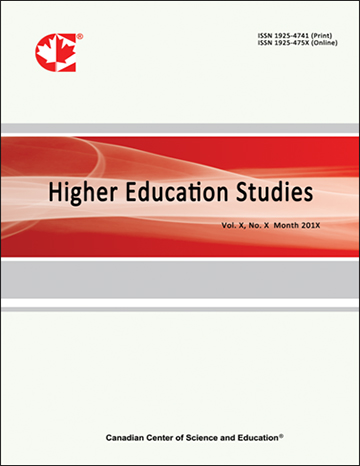Suggested Model (Related to the Student Portfolio) Used in Evaluation the Students in University Courses
- Omar M. Mahasneh
- Odeh S. Murad
Abstract
This study aimed to develop a suggested model related to the student’s portfolio used in evaluating the students in the university courses. After revising the theoretical literature and previous studies, two tools of the study have been constructed: Suggested model related to the student portfolio, and identifying the specifications towards using it in evaluation. After confirming the validity and reliability of the two tools of the study, they were applied to a sample of the study which consisted of (60) students from AlShobak university/Bachelor of Pre-Vocational Education, distributed equally into two groups (control group, and experimental group). To achieve the objectives of the study, two researchers evaluate the students in the course of “Foundations of Education” by using the suggested model of the student’s portfolio to the experimental group, on the other hand, there was an evaluation of the control group students’ educational acquirements in the traditional way, and to answer the questions of the study, both researchers used the averages and standard deviations, did the (T-Test), and did the analysis of unilateral and bilateral variance (ANOVA). The results of the study showed differences of statistical significance between evaluation of students through the suggested model of the student’s portfolio and evaluation in the traditional way in favor of the suggested model. Results also showed positive trend of students towards their evaluation using the suggested model, in addition, results did not show differences statistically significant to students depending on both gender and academic level. The study recommended diversity in using the Authentic Assessment ways, and that would be through evaluation their outcomes, and doing more similar studies on methods and strategies of evaluation to university students.
- Full Text:
 PDF
PDF
- DOI:10.5539/hes.v4n3p72
Index
- AcademicKeys
- CNKI Scholar
- Education Resources Information Center (ERIC)
- Elektronische Zeitschriftenbibliothek (EZB)
- EuroPub Database
- Excellence in Research for Australia (ERA)
- Google Scholar
- InfoBase
- JournalSeek
- Mendeley
- Open Access Journals Search Engine(OAJSE)
- Open policy finder
- Scilit
- Ulrich's
- WorldCat
Contact
- Sherry LinEditorial Assistant
- hes@ccsenet.org
